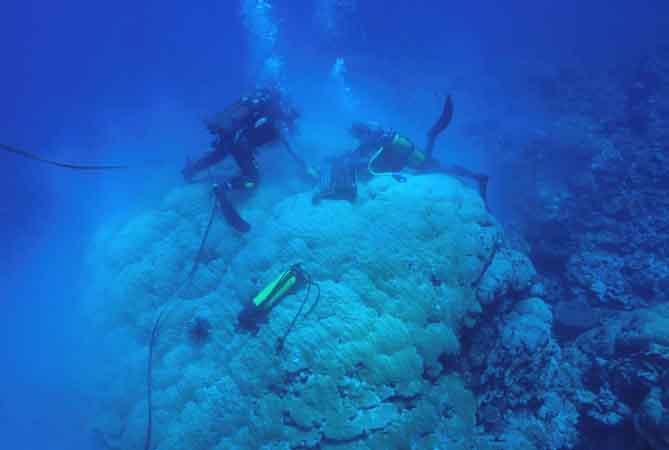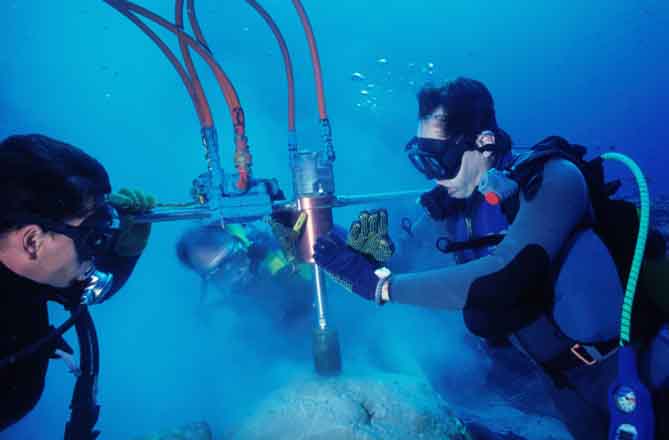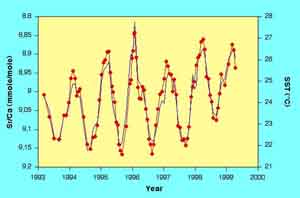 Home
Home  Publications
Publications  Facilities
Facilities  People
People  Fieldwork
Fieldwork  CV
CV  Contact
Contact 
 Home
Home  Publications
Publications  Facilities
Facilities  People
People  Fieldwork
Fieldwork  CV
CV  Contact
Contact 
| Massive corals belonging to the genera Porites or Diploastrea can live up to several centuries. Their aragonitic skeleton contains a wealth of geochemical tracers that can give us information on water parameters such as temperature, salinity, nutrient levels and pollutants. Like trees, corals grow more or less continuously, and form annual growth bands visible on this X-Ray of a Porites core from Rotuma island. |  |
 |
Coring is carried out underwater using a special drill and SCUBA equipment. Cores up to 7 m long can be collected. Back in the laboratory, the cores are slabbed, cleaned and sampled with a 3 axis automated microsampler. |  |
 |
The coral powder is then analyzed for trace metals and stable isotopes. The figure on the left shows how a specific tracer, in that case Sr/Ca (in red), can be linked to sea surface temperature (SST, in blue). The Sr/Ca closely follows the SST through time, implying that Sr/Ca analysis of coral samples that grew at a time when no instrumental data are available can be used to reconstruct past temperatures. |